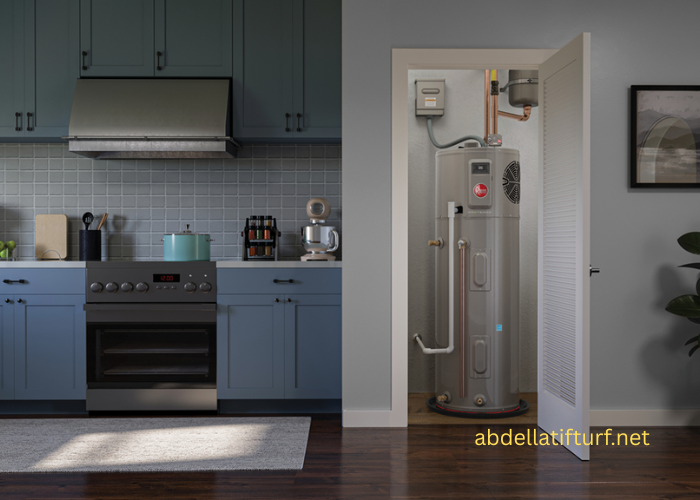In the 21st century, technology has become an integral part of our lives, transforming the way we work, communicate, and live. Among the most significant advancements in recent years is the rise of smart devices—gadgets and appliances equipped with connectivity, sensors, and advanced computing capabilities. These devices, often powered by artificial intelligence (AI) and the Internet of Things (IoT), have not only enhanced convenience but also revolutionized the way we experience daily life. From homes and workplaces to cities and healthcare, smart devices are at the forefront of a new era of modern living, where efficiency, comfort, and personalization are paramount.
The Evolution of Smart Devices
The concept of smart devices is not entirely new; it has been evolving over the past few decades. The journey began with the advent of personal computers and mobile phones, which laid the foundation for connectivity and digital interaction. However, the real transformation started with the development of smartphones in the early 2000s, which combined computing power, internet access, and a range of applications in a single, portable device. This marked the beginning of the smart device revolution.
As technology advanced, so did the capabilities of these devices. The integration of sensors, wireless communication technologies like Wi-Fi and Bluetooth, and the proliferation of cloud computing have enabled devices to collect, process, and share data seamlessly. Today, smart devices are not limited to phones and computers; they encompass a wide range of products, including smart home appliances, wearables, healthcare devices, and even vehicles.
The Impact of Smart Devices on Modern Living
Smart devices have a profound impact on various aspects of modern living, reshaping how we interact with our environment, manage our health, and perform everyday tasks. Here’s a closer look at how these devices are revolutionizing different spheres of life:
Smart Homes: A New Level of Convenience
One of the most prominent areas where smart devices have made a significant impact is in our homes. The concept of a smart home, where various devices and appliances are interconnected and can be controlled remotely, has become a reality. From smart thermostats and lighting systems to security cameras and voice-activated assistants, these devices offer unprecedented convenience and control.
For instance, a smart thermostat can learn a user’s preferences and adjust the temperature automatically, optimizing energy consumption and providing comfort without manual intervention. Smart lighting systems can be programmed to adjust brightness and color based on the time of day or the user’s mood. Security systems equipped with cameras, sensors, and AI can monitor the home in real-time, send alerts to the homeowner’s smartphone, and even recognize familiar faces.
Moreover, voice-activated assistants like Amazon Alexa, Google Assistant, and Apple Siri have become the central hubs of smart homes, allowing users to control various devices, set reminders, play music, and access information with simple voice commands. These assistants can integrate with a wide range of third-party devices, making it easier than ever to create a cohesive and responsive home environment.
Healthcare: Enhancing Well-being with Smart Technology
The healthcare industry has also seen a significant transformation with the advent of smart devices. Wearable technology, such as fitness trackers and smartwatches, has become increasingly popular for monitoring health and fitness metrics. These devices can track heart rate, sleep patterns, physical activity, and even detect irregularities in vital signs, providing users with valuable insights into their health.
Beyond wearables, smart medical devices are playing a crucial role in patient care. For example, continuous glucose monitors (CGMs) allow diabetic patients to track their blood sugar levels in real-time, reducing the need for frequent finger-prick tests. Smart inhalers help asthma patients manage their condition by tracking medication usage and sending reminders for timely inhalation.
Remote patient monitoring (RPM) has also gained traction, enabling healthcare providers to monitor patients’ health data from a distance. This is particularly beneficial for elderly patients or those with chronic conditions who require continuous monitoring. Through smart devices, healthcare professionals can receive real-time data, make informed decisions, and intervene promptly if necessary, improving patient outcomes and reducing hospital visits.
Workplaces: Boosting Productivity and Collaboration
Smart devices are not only transforming homes and healthcare but also reshaping the modern workplace. The rise of the Internet of Things (IoT) has led to the development of smart office solutions that enhance productivity, streamline operations, and foster collaboration.
Smart meeting rooms, for example, are equipped with sensors, cameras, and connectivity tools that facilitate seamless communication and collaboration among team members, regardless of their location. These rooms can automatically adjust lighting, temperature, and audio-visual settings based on the meeting’s requirements, creating an optimal environment for productivity.
Moreover, smart devices such as digital whiteboards, AI-powered voice assistants, and connected project management tools are enabling teams to work more efficiently. These tools can automate routine tasks, manage schedules, and provide real-time data analytics, allowing employees to focus on high-value activities. In addition, remote work has become more feasible with the help of smart devices, as employees can access files, attend virtual meetings, and collaborate with colleagues from anywhere in the world.
Smart Cities: Building Sustainable and Efficient Urban Spaces
The concept of smart cities is another area where smart devices are making a significant impact. Smart cities leverage IoT, AI, and data analytics to create urban environments that are more efficient, sustainable, and responsive to the needs of residents.
One of the key components of smart cities is smart infrastructure, which includes connected sensors and devices that monitor and manage various aspects of urban life. For example, smart traffic management systems can optimize traffic flow by analyzing real-time data from connected vehicles and traffic signals. This reduces congestion, minimizes emissions, and improves the overall efficiency of transportation networks.
Similarly, smart energy grids use connected devices to monitor energy consumption and distribution, enabling more efficient use of resources and reducing waste. Smart waste management systems can track waste levels in bins and optimize collection routes, reducing the environmental impact of waste disposal.
Moreover, smart cities are enhancing public safety through connected surveillance systems, emergency response tools, and predictive analytics. These technologies can detect and respond to incidents more quickly, improving the overall safety and quality of life for residents.
Challenges and Future Prospects
While smart devices offer numerous benefits, they also present challenges that need to be addressed. Privacy and security concerns are among the most significant issues, as these devices collect and transmit vast amounts of personal data. Ensuring that this data is protected from cyber threats is crucial to maintaining user trust and preventing potential misuse.
Additionally, the rapid pace of technological advancement can lead to compatibility issues between different devices and platforms. Standardization and interoperability are essential to creating a seamless and integrated smart ecosystem.
Looking ahead, the future of smart devices is promising, with continued advancements in AI, machine learning, and connectivity. As these technologies evolve, smart devices will become even more intelligent, capable of anticipating user needs and adapting to their preferences in real-time. The integration of 5G networks will further enhance the capabilities of smart devices, enabling faster data transmission and more reliable connectivity.
In conclusion, smart devices are revolutionizing modern living experiences by enhancing convenience, improving health outcomes, boosting productivity, and creating more sustainable urban environments. As technology continues to evolve, these devices will play an increasingly important role in shaping the way we live, work, and interact with the world around us. The potential of smart devices is vast, and their impact on society is only just beginning.




